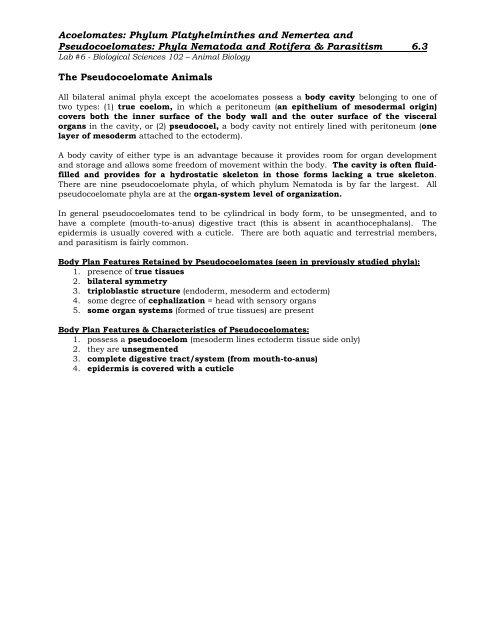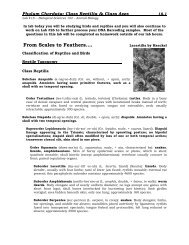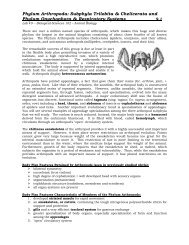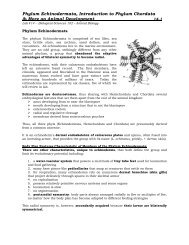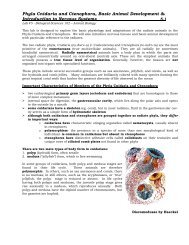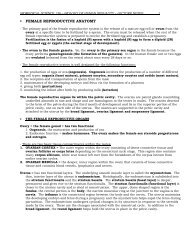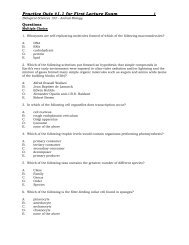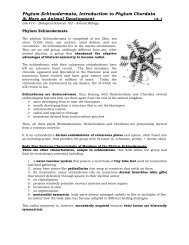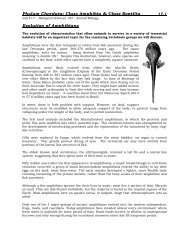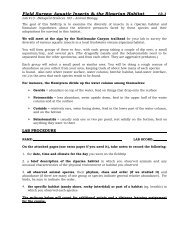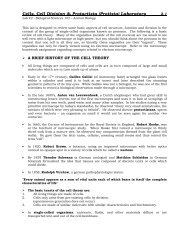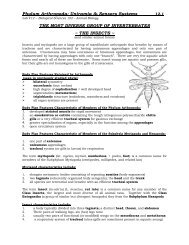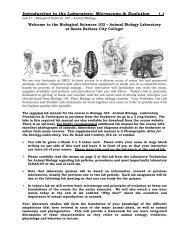Acoelomates: Phylum Platyhelminthes and Nemertea - Biosciweb.net
Acoelomates: Phylum Platyhelminthes and Nemertea - Biosciweb.net
Acoelomates: Phylum Platyhelminthes and Nemertea - Biosciweb.net
Create successful ePaper yourself
Turn your PDF publications into a flip-book with our unique Google optimized e-Paper software.
<strong>Acoelomates</strong>: <strong>Phylum</strong> <strong>Platyhelminthes</strong> <strong>and</strong> <strong>Nemertea</strong> <strong>and</strong><br />
Pseudocoelomates: Phyla Nematoda <strong>and</strong> Rotifera & Parasitism 6.3<br />
Lab #6 - Biological Sciences 102 – Animal Biology<br />
The Pseudocoelomate Animals<br />
All bilateral animal phyla except the acoelomates possess a body cavity belonging to one of<br />
two types: (1) true coelom, in which a peritoneum (an epithelium of mesodermal origin)<br />
covers both the inner surface of the body wall <strong>and</strong> the outer surface of the visceral<br />
organs in the cavity, or (2) pseudocoel, a body cavity not entirely lined with peritoneum (one<br />
layer of mesoderm attached to the ectoderm).<br />
A body cavity of either type is an advantage because it provides room for organ development<br />
<strong>and</strong> storage <strong>and</strong> allows some freedom of movement within the body. The cavity is often fluidfilled<br />
<strong>and</strong> provides for a hydrostatic skeleton in those forms lacking a true skeleton.<br />
There are nine pseudocoelomate phyla, of which phylum Nematoda is by far the largest. All<br />
pseudocoelomate phyla are at the organ-system level of organization.<br />
In general pseudocoelomates tend to be cylindrical in body form, to be unsegmented, <strong>and</strong> to<br />
have a complete (mouth-to-anus) digestive tract (this is absent in acanthocephalans). The<br />
epidermis is usually covered with a cuticle. There are both aquatic <strong>and</strong> terrestrial members,<br />
<strong>and</strong> parasitism is fairly common.<br />
Body Plan Features Retained by Pseudocoelomates (seen in previously studied phyla):<br />
1. presence of true tissues<br />
2. bilateral symmetry<br />
3. triploblastic structure (endoderm, mesoderm <strong>and</strong> ectoderm)<br />
4. some degree of cephalization = head with sensory organs<br />
5. some organ systems (formed of true tissues) are present<br />
Body Plan Features & Characteristics of Pseudocoelomates:<br />
1. possess a pseudocoelom (mesoderm lines ectoderm tissue side only)<br />
2. they are unsegmented<br />
3. complete digestive tract/system (from mouth-to-anus)<br />
4. epidermis is covered with a cuticle


